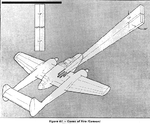Stephan Wilkinson
Airman
- 27
- Oct 20, 2007
Somewhere I read--can't remember where--that a Black Widow's belly-pod cannons could be deflected by the pilot a quarter of a degree left, right, up or down (which minuscule amount would, of course, have a substantial effect on where the fire went a hundred or more yards out from the airplane). The pilot could thus choose converging, diverging, elevated or declinated fire. Does anybody know if this is true, or was it maybe an experimental feature briefly tried?
And if it -was- true, would P-61 pilots actually complicate their already-busy lives by choosing to use this feature rather than simply firing straight ahead?
And if it -was- true, would P-61 pilots actually complicate their already-busy lives by choosing to use this feature rather than simply firing straight ahead?

